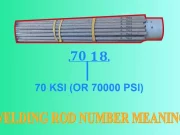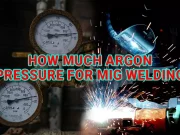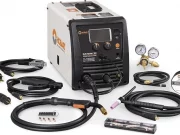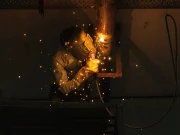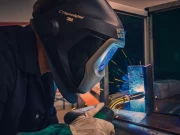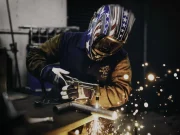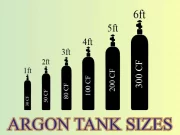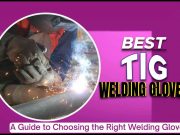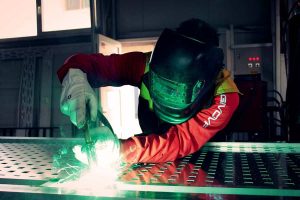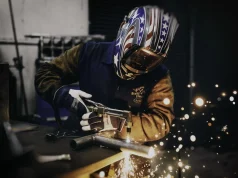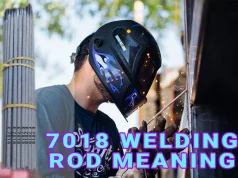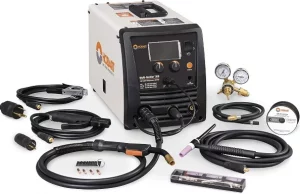It is common to find questions like, “can you weld cast aluminum?” If you are trying to weld or fabricate something out of such an alloy, then it makes sense to figure out if it’s possible or not. So, without wasting any further time, let’s find the answer to the question;
Is it possible to weld cast aluminum?
Yes, you can weld most cast aluminum. However, understand that welding cast aluminum might not be the easiest of tasks in most cases, and it could be as a result of impurities. The thing is these alloys are used in places where they come in contact with dirt. But yes, most cast aluminum are weldable, though there are factors you need to pay attention to. One is the filler. You need to use the ideal filler and consider the properties of the cast aluminum you want to weld. If you are talking about the 3xx.0 Series (319.0, 357.0, and 356.0) and 5xx.0 series, which includes the 535.0 cast aluminum, then the fillers you should consider using are the 4043 and 5356, respectively. Furthermore, permanent mold and sand castings are a breeze to weld compared to die castings.
Continue reading for details on the topic!
How To Prepare To Weld Cast Aluminum
When it comes to welding similar or dissimilar metals, preparation is a very critical stage you should never take for granted. You need to prepare the metals so that there won’t be any fault in your welds.
Earlier, I mentioned that impurities could make it difficult to weld cast aluminum, and that’s it. So, the best thing is to clean your cast aluminum properly before bringing the parts you intend to weld, together.
Again, when it comes to cleaning or preparing cast aluminum for welding, the basic things you need to consider are grease, oil and water vapor. If you haven’t taken care of these impurities, then you should forget about welding this alloy.
Please take note: Your first prep action before welding cast aluminum should not be to use a wire brush. Instead, try to remove the oil and grease, and then water vapor before introducing the wire brushing.
If you follow the process (cleaning properly before using a wire brush), there is a high possibility that whatever you are welding may come out good.
Alright, here are some of the steps you need to follow when cleaning your cast aluminum before welding.
Step#1 – Decide what solvent to use
Firstly, try to get rid of oils and grease, including other contaminants around the area you want to wield. Get a rag, soak in a solvent and clean. The process is that simple.
Note: To de-grease, you can use solvents like acetone, lacquer thinner, methyl ethyl ketone and toluene. They are all great solvents that can get the job done for you.
However, you only need one of the solvents mentioned above to clean the alloy before you start welding. I only mentioned the different solvents so you can choose whichever is more convenient for you to get.
Step#2 – Use the solvent on the metal
After you have decided on a solvent to use, the next step should be to apply it on the metal you wish to weld. However, you should not pour the solvent directly to the alloy after you have fitted the various parts to weld. The best thing to do is to place a clean rag in your chosen solvent and use it to clean up each of the parts you wish to weld before bringing them together.
Step#3 – Use stainless steel wire brush (manual or powered)
After removing the grease, oil and water vapor with the organic solvent, your next line of action should be to remove the oxide. You can use a wire brush to get rid of it. You can also get oxide removal from shops around you or online. It comes in something like a squeeze bottle or spray.
Note: You need to be extremely careful when dealing with these oxide removal products and ensure you re-rinse and dry the parts you wish to weld before you start welding it.
Step#4 – Assemble the parts and start welding
Once you are done cleaning the parts you wish to weld, and you are sure the solvent has evaporated, you can fit the pieces together and start welding.
Note: It would be great if you weld the parts within a few days after cleaning. The reason is that grits in the air and even dirt, can find their way into the joint again. So, what is the wise thing to do if you are not interested in welding the joints within a few days? Keep the joint covered with Kraft paper until you are ready to weld. You should also do some light cleaning too.
As I said, the prepping might be a bit tasking, but it is necessary to have solid welds. So, take it seriously and do the right thing.
Casting Aluminum: Diverse Processes Explained
Casting is regarded as the most popular process of transforming aluminum into various products. And although a series of technical advances may have taken center stage, the basic principles are still intact.
So, how is cast aluminum formed? Well, the process involves pouring molten aluminum into a mold to create any desired pattern. Put simply; it comprises of heating aluminum to its liquid state and then pouring it into a mold. The mold can be made with different materials such as sand and tool steel.
This explanation makes the processing of cast aluminum look kind of simple, but it is not. Let’s take a look at sand casting, die casting and permanent mold casting; the three most popular methods used.
The sand casting
The production of sand cast aluminum involves packing a mixture of fine sand around a pattern, which comprises the product of choice. Usually, the design will be a bit bigger than the final output, a process that allows the aluminum to shrink while cooling.
Furthermore, the difference between sand casting and the other methods such as die-casting and permanent mold casting is that sand casting is more economical and ideal when small quantities are required, including large castings and intricate designs. Plus, you can even reuse the sand multiple times.
Note: Another thing you need to know about sand casting is that it is used for the production of a range of metal components, particularly those with more complex geometries. However, some of the smaller parts made from this sort of alloys include pulleys, gears, connecting rods, crankshafts and propellers.
The permanent mold casting
Permanent mold casting is another process by which cast aluminum is created. It features molds, including cores of steel and other metals. In this process, molten aluminum is usually poured directly into the mold, though there is an application of a vacuum.
Alright, the good thing about this type of casting is strength. Permanent mold castings are stronger than the likes of sand and die castings. Plus, it is also much easier to weld, compared to die casting.
Note: The permanent mold castings are used to produce a range of components such as alloy wheels, gears, splines, pipe fittings, automotive engine pistons, gear housings and automotive engine pistons.
The die casting
The die-cast is applied when it comes to mass manufacturing of parts, particularly those that require a little bit of machining and finishing. But in this type of casting, the pressure is needed to force the molten aluminum into the mold, which includes steel die. The hardened steel die (mold) is used for this casting because of the high pressure that is required. Thus, die-cast startup costs are usually on the high side.
Now let’s compare products made with die-casting to that of permanent mold casting. For die-cast, the pressurized casting process deployed causes the skin of the products made to be stronger, while the interior is usually weaker than the permanent mold casting. You should bear in mind that there are two kinds of die casting. These include the low and high-pressure die casting.
Note: Aluminum die-casting is used in the manufacturing of a wide variety of components. And this includes parts in cameras, office automation devices, video and even personal computer. They also used for making flywheels, housing for air blowers, solenoid valve, and feed roller.
Why Is Cast Aluminum Alloy Special?
Casting can be best described as a cost-effective and straightforward process that involves the forming of aluminum into a range of products. Plus, it is also used for making a wide range of products, across diverse industries. This includes aerospace, airline and automobile industry. Aluminum castings are also used in producing cookware, which we use in our homes.
So, we use products made from cast aluminum daily. That is why it is popular, widely used and equally important.
Now about the properties of cast aluminum, one thing you need to know is that this alloy is quite strong and durable. But then, keep in mind that they are not stronger than cast iron.
The cost is also what makes this alloy special. Cast alloy is cost-effective, compared to the likes of aluminum alloy and other metals.
Conclusion
The question is “can you weld cast aluminum”, to which the answer is yes. You can weld this alloy, but keep in mind that the preparation before welding is essential. You need to ensure the alloy is cleaned before you start welding to have smooth welds. Additionally, you would need to use the right filler for the alloy you wish to weld, as that can impact the output or quality of your welds.




